The E.C.A – Statute of Children and Adolescents is the law that creates conditions of requirements for the rights of children and adolescents, which are defined in article 227 of the Federal Constitution. Through the ECA, several rights were achieved that every child and adolescent should always have the right to, but which they only have, legally, after the creation of the statute.
In today's post, we've separated a lesson plan, so you can pass on to your students, in an interactive and fun way, some rights that all of them should know, in the role of a child or adolescent. We guarantee that the lesson plan below will be very effective and that the kids will love it. He follows:
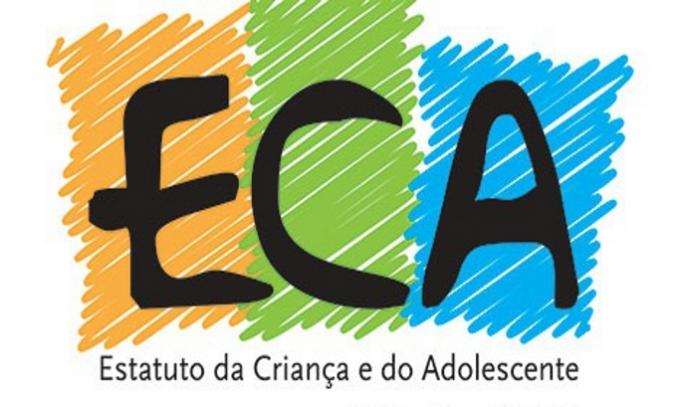
What the student can learn from this class
Goals:
• Know what Law 8069/90, the Child and Adolescent Statute, says.
• Know some of the rights and duties of children and adolescents.
• Differentiate child from teenager.
• Find out how to ensure that your rights are guaranteed.
• Discuss compliance with the law for all children.
To carry out this class, the student must know how to use the programs on their laptop, such as: Wxcam and Mozilla Firefox and Class Collaboration Mode.
1st MOMENT: APPROXIMATELY A 60 MIN CLASS
GETTING TO KNOW ECA
– The ECA, Statute of the Child and Adolescent, brings in its text some rights and duties of the child. These rights, which have existed since July 13, 1990, are not always fulfilled, but they should appear as a lesson theme so that children know their rights and duties and enforce them.
-Professor, the legislation in its entirety can be found on the Planalto website: http://www.planalto.gov.br/ccivil_03/Leis/L8069.htm, however, for use in this class and introduction of the theme, our option was for a video.
– To motivate students ask them to watch the following video which makes some interesting highlights about ECA in an accessible way. This is available on the Youtube website and can be accessed, with the help of Mozilla Firefox [Metasys> Favorites>Internet Browser], at the electronic address: http://www.youtube.com/watch? v=UmYrApzquIE
Activities
The text of the law brings some highlighted points such as: life, health, food, education, sport, leisure, professionalization, culture, dignity, respect, freedom and family life and community. After showing the video, divide the children into 12 groups, that is, a group or pair for each theme highlighted in the law. Ask them to access the Tux Paint digital painting tool on their netbooks [Metasys>Applications>EduSyst>Art and Music>Digital Painting] and ask them to create an image for each of the themes (example: a drawing for food, one for health and so on) and identify which theme is being represented.
-Note: This program is part of the features of UCA laptops and children will love to use it. In it we have features such as stamps and others that are different from KolourPaint, such as the “Magic” tool, which makes grass and rainbows by itself. It's worth meeting him!
-Just for a better view, here is an image with the theme of food:
2ND MOMENT: APPROXIMATELY A 60 MIN CLASS SOCIALIZING: ASSEMBLING A PANEL
Teacher, guide your students to print their drawings with your help and, together, assemble a panel with drawings related to the themes represented. Remember to identify the panel with: title, objective of the work, authors (students, class and teacher) and date of completion, as other people will look for information on it.
PRODUCING TEXT
-Teacher, in addition to drawings, it is important that the children say what they understand, so we will also be working with orality and the elaboration of thought. Make a collective text using the lines, which will serve as a record and contextualization of the writing.
-Take advantage of the moment to create more questions and curiosities about the subject and deepen your knowledge a little.
-For this, first, contextualize why the ECA was created and how some children live. Show situations that are unfavorable to their development, such as child labor, for example. For this, we suggest a report from Jornal da Rede Globo, available on the website:
In addition to showing real facts, it indicates the need for bodies and laws to protect them.
At this point, question them:
• What are you talking about in the video?
• Would you like it to happen to you what happens to the children in the video?
• What will the lives of children who have to work be like?
• What types of child labor have you seen?
• Will the children shown in the video be able to study?
• How do you imagine the future of these children will be if you continue working now?
• Who can help these children?
• And if you see or suffer any kind of mistreatment, do you know who to turn to for help?
– Later, tell them that, in addition to the ECA, there are also “Tutelary Councils”, which is where we can ask for help. Propose that they invite a person who works in the Guardianship Council of their municipality and helps children, using the Statute.
– You can visit the place where the Guardianship Council works or invite a counselor to come to the school
– This visit will allow the children to visualize the work carried out by the counselors, to be aware that they are protected and that there is an institution they can turn to. In addition to the work linked to citizenship and knowledge of their rights and duties.
3rd MOMENT: APPROXIMATELY A 60 MIN CLASS PLANNING THE INTERVIEW
-At this moment, it is necessary to organize, with the help of the children, a plan involving: a script for interviews, invitations for the member of the Guardianship Council and the scheduling of the visit.
Make a problematization about the subject, or better, questions such as: what we want to know and what we are going to ask; create the interview script with them.
Also, ask how they will go about inviting the Guardianship Counselor? Establish with them who will ask the questions, this makes the activity more organized.
Call and talk to a counselor and arrange the visit. Request his e-mail and anticipate for him (a) that the children will send invitations.
PREPARING THE INVITATION
-Select some invitations (birthday, wedding and others) and take them to the students to observe what their textual structure is and what they are the information that must be included: who we are inviting, the reason (objective), the place of the event, the day, the time, who is inviting. If you don't have any printed invitations, ask them to use their netbooks and visit the site http://www.criarfazergratis.com/modelos-de-convites/. On this site they will have the opportunity to see different models of invitations.
Ask them to open Tux Paint again [Metasys>Applications>EduSyst>Art and Music>Digital Painting], write and draw on your invitation, remembering the information it must contain. This activity will allow them to observe the social function of writing and make attempts at writing, reworking it.
At the end, ask them to open Mozilla Firefox [Metasys> Favorites>Internet Browser] and send their invitations to your email.
As children are in the literacy phase, socialization and the possibility of confronting their writing hypotheses among the group members, it will enable the raising of new questions between the conventional writing and the one performed by they.
This activity can help them to come up with new writing hypotheses.
For this, remember the data necessary to prepare the invitation. Once ready, ask them to exchange invitations and correct any errors.
These invitations can be part of the panel, as a way to show the work of each one and even as an evaluation of the representation of the written code. However, to send it to the Guardian Council member, it is interesting to create a collective invitation, where all the data appears. You can assemble it in a room, collectively, and you can also use some drawings to compose it.
At the end, you can send it to the guardianship counselor's e-mail.
4th MOMENT: APPROXIMATELY A 60 MIN CLASS CONDUCTING THE INTERVIEW
For this activity, it is necessary to print the script and organize the children. Request that, during the interview, they record the speech of the person interviewed, to later record what they heard in a short report.
-Students will be able to record from WxCam, the webcam of their computers, which can be accessed by the Camera icon, on the desktop or by the path: [Metasys>Applications>Multimedia>WxCam].
– Collectively establish the order of questions. Let each child ask their question. You can be responsible for mediating the work and, during the interviewee's speeches, photographing.
– The most important objective of this activity is to remove some of the distorted image that many people have of guardianship councils, as if they were something bad or harmful, something against the family. It is interesting that they see that guardianship counselors are helpers and defenders of the rights of children, including the family.
home activities
– Ask the children to take their computers home and review the interview, accompanied by an adult who will help them write the report, which they should take to their next class.
– Also guide them to question their fathers/mothers or the adult responsible for them about what changed from their childhood to the childhood of children who were born after the creation of the law.
– This homework assignment will not only reinforce the knowledge learned with the child, but will also enhance their learning, as they “teach” the adult what they know.
– As this activity also provides for the digital inclusion of the family, it is interesting to send some guidelines, such as the name and shortcuts of the program they will use to write the text. See a suggestion:
HOMEWORK
PARENTS AND/OR GUARDIANS:
TODAY, ___/____/____, WE HAD A LECTURE WITH THE GUARDIAN DIRECTOR ________________________________________ AND WE HAVE A LOT OF DOUBTS ABOUT HOW THIS AGENCY WORKS, FOR IT THERE IS, AMONG OTHER QUESTIONS.
§ DISCUSS WITH YOUR CHILD ABOUT THE INTERVIEW AND WHAT CHANGED FROM YOUR CHILDHOOD TO THE CHILDREN OF CHILDREN BORN AFTER THE LAW WAS CREATED.
§ IF SHE NEEDS TO COLLABORATE BY HELPING HIM TO WRITE A REPORT ON: WHAT SHE LEARNED ABOUT ECA, CHILD AND ADOLESCENT STATUS, AND GUARDIANSHIP COUNCILS.
TO TYPE, USE KWORD[METASYS> APPS>PRODUCTIVITY TOOLS>OFFICE SUITE> TEXT PROCESSOR]
Also ask them to make an interview with an adult in the family (father, mother, uncle, grandfather or other) addressing:
HOW WAS YOUR CHILDHOOD:
NAME:
AGE:
– DID YOU PLAY A LOT?
– DID YOU HAVE TO WORK?
– WAS STUDYING IMPORTANT? UNTIL WHAT AGE, MORE OR LESS?
– BUT WHAT WAS MOST IMPORTANT, STUDYING OR WORKING?
– DID YOU RECEIVE ANY KIND OF PUNISHMENT WHEN YOU DID SOMETHING WRONG? HOW DID IT HAPPEN?
– CURRENTLY, CHILDREN CANNOT WORK OR SUFFER PHYSICAL PUNISHMENT BECAUSE THE STATUS OF CHILDREN AND ADOLESCENTS, ECA, PROTECTS US. WHAT DO YOU THINK?
– IF AT THE TIME OF YOUR CHILDHOOD THERE WERE ECA, DO YOU THINK YOUR CHILDHOOD WOULD BE BETTER OR WORSE?
FOR THIS, USE KRECORD [METASYS>APPLICATIONS>MULTIMEDIA>SOUND RECORDER]
5TH MOMENT: APPROXIMATELY A 60 MIN CLASS EXPANDING THE DEBATE
At this moment, reinforce some of the rights and duties of children and adolescents, but for a broader and better contextualization of the theme, it is It is important to say what the law brings to differentiate between children and adolescents, which criteria(s) to belong to each of these groups.
For this activity, the suggestion is that you go to the Pró Menino website, available at: http://www.fundacaofia.com.br/, and following pages. This site has a history of Turma da Mônica that portrays the most relevant aspects of the ECA.
To present the story to the children, you can print it and reproduce it in large size, A3 paper, or also, create a presentation in KPresenter, which would be interesting so they could also view the Colors. This program can be accessed through the path: [Metasys, Applications, Productivity Tools>Office Suite>Presentation Generator]
– Later, provide an opportunity for a debate, through Class Collaboration Mode, where the children can say what they think and reflect on the subject, which will bring a broadening of points of view and a greater criticality.
– Ask them what the difference is between a child and an adolescent and if they have different rights and duties.
– Another relevant question is how to ensure that your rights are guaranteed.
– This tool, available on computers in the One Computer per Student _ UCA program, is represented by a book in the Toolbar, on the right corner of the computers.
– Class Collaboration Mode will allow students to express their views on observations. It will create an interesting debate.
Note: if you have questions about how to use Class Collaboration Mode, you can click on the icon and on the item “Help”, to learn more about tools or consult the website: www.metasys.com.br
6th MOMENT: APPROXIMATELY A 60 MIN CLASS ENDING THE TOPIC
Videos
Start this moment with the socialization of campaigns against child abuse, which could be watched, on the Youtube site, with the help of Mozilla Firefox [Metasys> Favorites>Navegador de Internet].
1 – Guardianship Council: everyone needs to know
THE) http://www.youtube.com/watch? v=-zKFv5bYOZk
B) http://www.youtube.com/watch? v=umOq7rP1VrM
2 - Public Ministry: http://www.youtube.com/watch? v=FUrBmOvdwLw
And, to finish the work with the Child and Adolescent Statute theme, the suggestion is a more playful activity. The music of Arnaldo Antunes and Paulo Tatit moves towards showing what should or should not be part of the children's universe. Children will be able to watch the clip through the electronic address: http://www.youtube.com/watch? v=u9aa7FqMcRU, using their laptops.
Child Does Not Work - Sung word
Composition: Arnaldo Antunes and Paulo Tatit
Pencil, notebook, gum, top
sun, bike, skateboard, shorts
Hideout, plane, running, drum, screaming, garden, confusion
Ball, plush, snack, crayon
River bath, sea bath, skip the cell, chocolate
Sand tank, gnome, mermaid, pirate, whale, butter on bread
Chalk, merthiolate, band-aid, soap
Tennis, shoelace, pillow, mattress
Puzzle, doll, shuttlecock, button, tag, paper, cardboard
child doesn't work, child works
Child doesn't work...
Pencil, notebook, gum, top
sun, bike, skateboard, shorts
Hideout, plane, running, drum, screaming, garden, confusion
Ball, plush, snack, crayon
River bath, sea bath, skip the cell, chocolate
Sand tank, gnome, mermaid, pirate, whale, butter on bread
child doesn't work, child works
Child doesn't work...
Chalk, merthiolate, band-aid, soap
Tennis, shoelace, pillow, mattress
Puzzle, doll, shuttlecock, button, tag, paper, cardboard
child doesn't work, child works
Child doesn't work...
1, 2 beans and rice
3, 4 beans on the plate
5, 6 all over again...
Pencil, notebook, gum, top
sun, bike, skateboard, shorts
Hideout, plane, running, drum, screaming, garden, confusion
Ball, plush, snack, crayon
River bath, sea bath, skip the cell, chocolate
Sand tank, gnome, mermaid, pirate, whale, butter on bread
– Print the lyrics of the song and reproduce it on A3 paper so that it is better visualized.
7TH MOMENT: APPROXIMATELY A 60 MIN CLASS EXPLORING THE LYRICS OF THE MUSIC
Repeat the song for the children, using the same steps as before and explore reading and writing.
– See a suggestion:
1. Ask them to identify words in the song that start with the letter B and circle in red.
2. Find out how many times the word CHILD appears and circle it in green.
3. Identify and copy which games and toys are mentioned in the song. Create a board for them to rate. See a suggestion:
KIDS
For this activity, reproduce the music, in conventional size (A4), so that they stick it in the notebook, do the activities and illustrate.
– Afterwards, give each student two sheets of paper measuring approximately 3cm by 7cm and ask them to write words that marked the theme.
– Finally, paste the lyrics and words on the mural, next to the drawings. This way, you will already have the entire record of the class.
Complementary Resources
Videos:
ECA Campaign: http://www.youtube.com/watch? v=X4DtK4xngT0
Music Children's Rights: http://www.youtube.com/
I want to be taken care of: http://www.youtube.com/watch? v=rgDWnJ08fZg&feature=related
Sites:
http://www.canalkids.com.br/cidadania/direitos/brasil.htm
https://www.unicef.org/
Assessment
The evaluation of this class will go through the visualization of the children's interest and involvement in the theme, this will be observed throughout the developed activities.
Therefore, make sure they understand what the ECA is and that it establishes rights and duties as well, that the Guardianship Council is a body that collaborates with children and adolescents, aiming to make them guaranteed.
Also note, during the classes, if the students were able to: differentiate child from adolescent, demonstrate how to their rights are guaranteed and it is understood that, despite being for all children, compliance with the law has some difficulties.
This class will also allow the student to develop concepts of citizenship and criticality, factors to be observed and evaluated during the activities, but, above all, in the debate.
Did you like it? Share this post on your social network
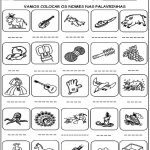 Activities for Students with Intellectual Disabilities to Print
Activities for Students with Intellectual Disabilities to Print
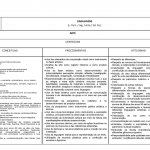 6TH TO 9TH YEAR ARTS CLASS PLAN
6TH TO 9TH YEAR ARTS CLASS PLAN
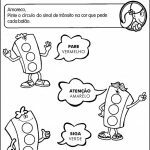 Early Childhood Education Traffic Activities
Early Childhood Education Traffic Activities
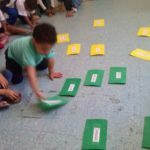 Playful Plays With Own Names
Playful Plays With Own Names
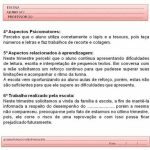 SPECIAL STUDENT INDIVIDUAL REPORT
SPECIAL STUDENT INDIVIDUAL REPORT
 CORNER OF TEACHING SEQUENCES + CLASS PLAN
CORNER OF TEACHING SEQUENCES + CLASS PLAN
This site uses Akismet to reduce spam. Learn how your comment data is processed.